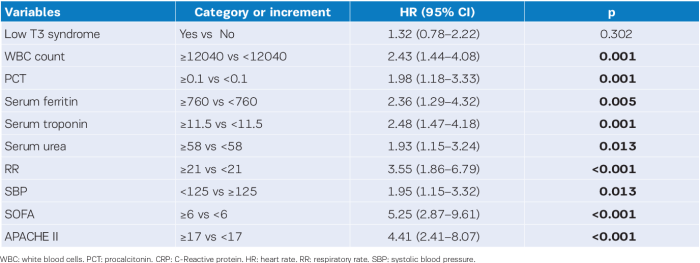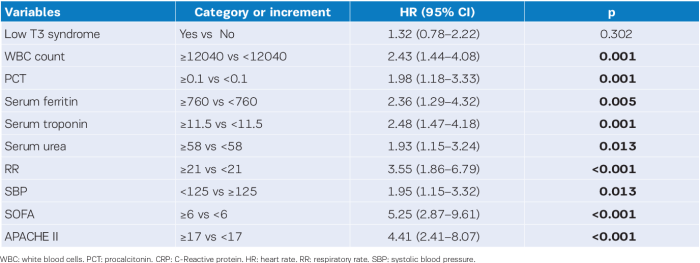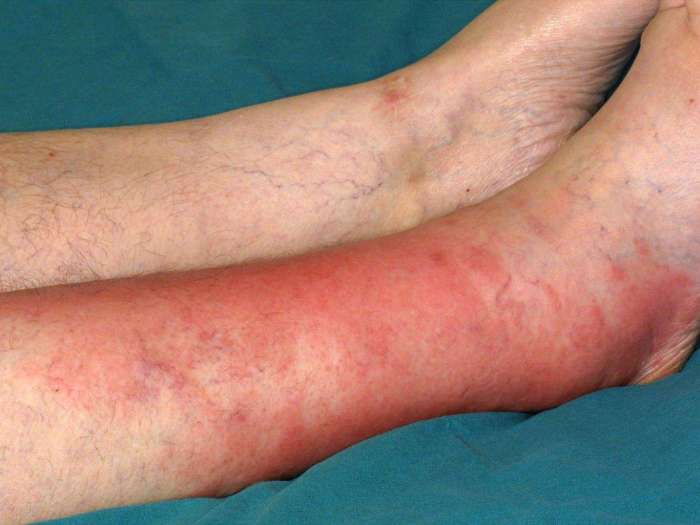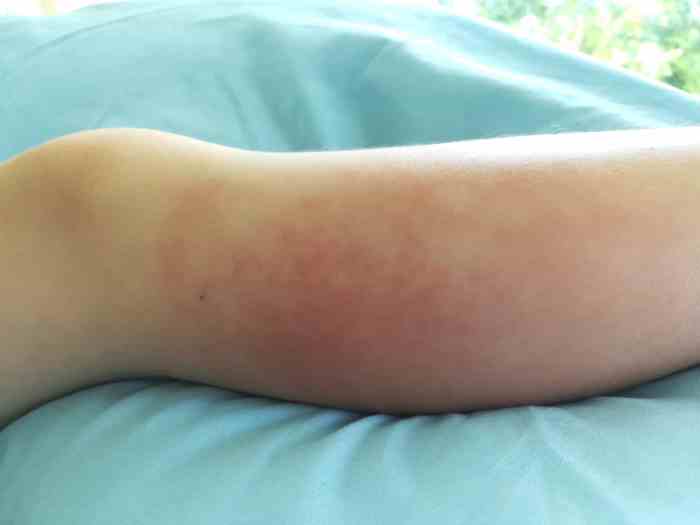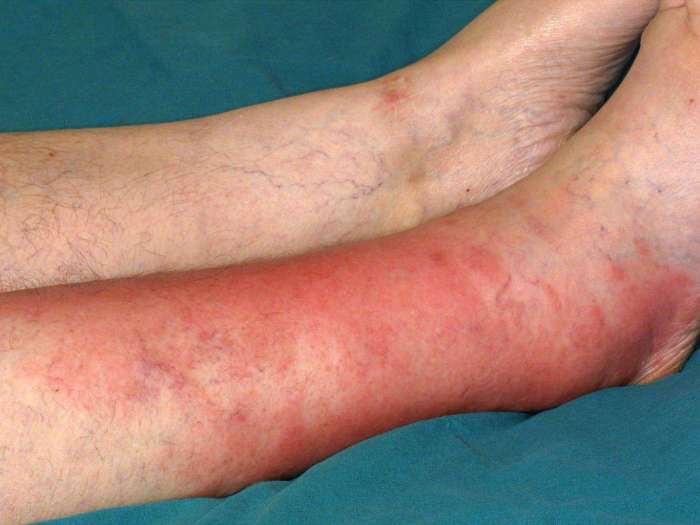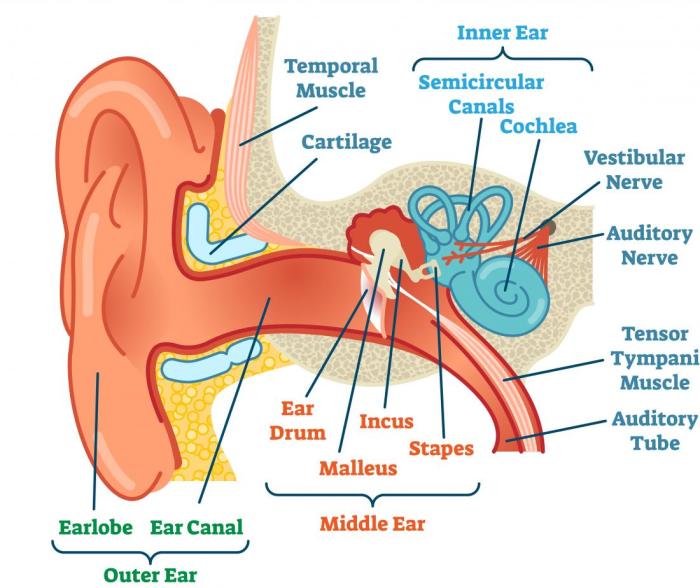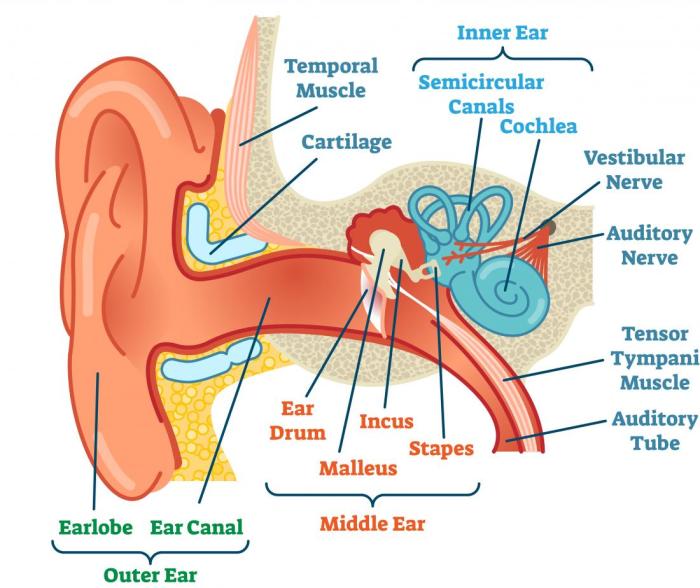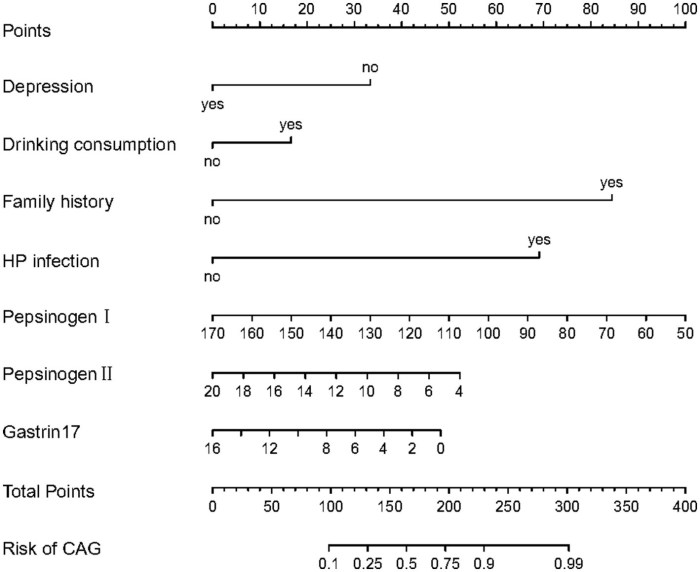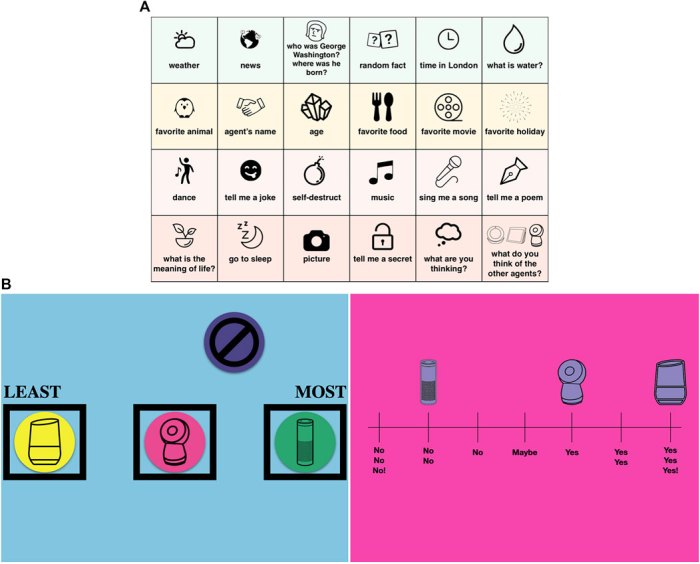Infections that cause headache and fever are a common concern, impacting individuals of all ages and backgrounds. Understanding the various types of infections, their transmission methods, and the specific symptoms they produce is crucial for proper diagnosis and effective treatment. This comprehensive guide explores the diverse world of infections leading to these symptoms, from viral to bacterial, parasitic, fungal, and neurological, providing a detailed understanding of each category and their unique characteristics.
We’ll delve into the specific mechanisms by which these infections trigger headaches and fevers, exploring common symptoms beyond the core symptoms. A comparison table outlining typical durations for various infections will also help readers grasp the timeframe of these conditions. We’ll also investigate infections in specific populations like children, immunocompromised individuals, and pregnant women, emphasizing the unique considerations for managing these cases.
Infections Causing Headaches and Fever
Infections are a common cause of headaches and fever, often stemming from the body’s response to invading pathogens. These infections can range from mild, self-limiting illnesses to severe conditions requiring medical attention. Understanding the underlying mechanisms and associated symptoms is crucial for appropriate diagnosis and treatment.Infections trigger a cascade of responses within the body. Pathogens, like viruses and bacteria, release toxins or invade cells, stimulating the immune system.
The immune system’s response often involves the production of inflammatory molecules that cause fever and pain, including headache. This inflammatory response, while vital for defense, can also lead to discomfort and other symptoms.
Common Symptoms Beyond Headache and Fever
Beyond the core symptoms of headache and fever, various other signs and symptoms accompany infections. These can vary depending on the specific pathogen and the individual’s immune response. Common additional symptoms include body aches, fatigue, nausea, vomiting, and loss of appetite. Sore throat, runny nose, cough, and skin rashes can also manifest, providing further clues to the underlying infection.
Typical Duration of Infectious Causes
The duration of an infection significantly influences the severity and potential complications. The table below provides a general overview of the typical duration for various infectious causes of headache and fever. Note that these durations are estimates and can vary based on individual factors and the specific strain of the pathogen.
| Infection | Duration (days) | Symptoms | Severity |
|---|---|---|---|
| Viral Gastroenteritis (Stomach Flu) | 1-3 days | Nausea, vomiting, diarrhea, abdominal cramps, headache, fever | Mild to Moderate |
| Influenza (Flu) | 3-7 days | High fever, body aches, cough, sore throat, headache, fatigue | Moderate to Severe |
| Bacterial Meningitis | Variable, potentially days to weeks | High fever, severe headache, stiff neck, altered mental status, seizures, rash | Severe |
| Acute Bronchitis | 5-10 days | Cough, sore throat, headache, fever, chest discomfort | Mild to Moderate |
| Common Cold | 3-14 days | Runny nose, sore throat, sneezing, headache, mild fever | Mild |
Viral Infections
Viral infections are a significant cause of headaches and fever, often mimicking bacterial illnesses. Understanding the specific viruses, their transmission, and how they present in different age groups is crucial for appropriate diagnosis and management. These infections can range from mild to severe, impacting individuals differently depending on factors like their immune system and overall health.Viral infections are often characterized by a complex interplay of immune responses and viral replication.
The body’s response to the infection triggers inflammation, leading to symptoms like fever and headache. This inflammatory response can vary in intensity and duration depending on the specific virus and the individual’s immune status.
Prevalent Viral Infections
Common viral infections associated with headache and fever include influenza (flu), rhinovirus (common cold), Epstein-Barr virus (EBV), and various types of enteroviruses. These viruses are widespread and can cause significant illness, especially in vulnerable populations. Identifying the specific virus involved often requires laboratory testing.
Transmission Routes
Understanding the transmission routes of these viruses is key to prevention. Influenza viruses, for example, are transmitted primarily through respiratory droplets produced when an infected person coughs or sneezes. Rhinoviruses, the causative agents of the common cold, are spread through direct contact with contaminated surfaces or objects. Enteroviruses, such as those causing hand, foot, and mouth disease, are often spread through the fecal-oral route.
EBV, on the other hand, is spread primarily through saliva, hence the term “kissing disease.”
Presentation in Different Age Groups
The presentation of viral infections varies significantly across age groups. In infants and young children, viral infections may manifest with high fevers, irritability, and difficulty feeding. Older children and adults may experience more typical symptoms like body aches, fatigue, and cough, alongside the headache and fever. The severity of symptoms can also differ based on the specific virus.
Headaches and fevers are common symptoms, often signaling an infection. Understanding the different types of infections causing these symptoms is crucial for proper diagnosis and treatment. Sometimes, lifestyle choices like calorie restriction, such as those explored in the calorie deficit vs intermittent fasting debate, can indirectly influence immune function, potentially affecting susceptibility to infections. It’s important to remember that while these lifestyle choices can play a role, prompt medical attention is always essential for infections causing headache and fever.
Common Viral Infections Summary
| Virus | Symptoms | Treatment | Transmission |
|---|---|---|---|
| Influenza (Flu) | High fever, cough, sore throat, body aches, headache, fatigue | Rest, fluids, over-the-counter pain relievers. Antiviral medications may be considered in some cases, especially in high-risk individuals. | Respiratory droplets (coughing, sneezing) |
| Rhinovirus (Common Cold) | Runny nose, sore throat, sneezing, cough, mild headache, fatigue | Rest, fluids, over-the-counter pain relievers, decongestants (use with caution) | Direct contact with contaminated surfaces/objects, respiratory droplets |
| Epstein-Barr Virus (EBV) | Fever, fatigue, sore throat, swollen lymph nodes, headache, body aches | Rest, fluids, over-the-counter pain relievers. Treatment focuses on managing symptoms. | Saliva (kissing, sharing utensils), close contact |
| Enteroviruses (e.g., Hand, Foot, and Mouth Disease) | Fever, blisters in the mouth, on the hands and feet, headache | Rest, fluids, over-the-counter pain relievers. Treatment is mainly supportive. | Fecal-oral route, direct contact |
Bacterial Infections
Bacterial infections are a significant cause of headache and fever, often presenting with symptoms distinct from viral infections. Understanding these differences is crucial for proper diagnosis and treatment. These infections can range from relatively minor illnesses to life-threatening conditions, depending on the specific bacteria and the individual’s immune response.Bacterial infections trigger an inflammatory response within the body. This response, in turn, can lead to the production of chemicals that cause fever and headache.
The inflammatory process also often results in localized symptoms, such as pain or swelling, depending on the site of infection.
Common Bacterial Infections Causing Headache and Fever
Several bacterial infections can lead to headaches and fevers. The most prevalent ones include meningitis, pneumonia, and bloodstream infections (septicemia). These infections affect different parts of the body and have distinct characteristics in their presentation. Bacterial meningitis, for instance, is a severe infection of the membranes surrounding the brain and spinal cord.
Mechanisms of Headache and Fever Induction
Bacterial infections initiate a complex cascade of events that ultimately result in headache and fever. The bacteria release toxins and inflammatory substances, stimulating the immune system. This immune response triggers the production of pyrogens, chemicals that reset the body’s temperature set point, leading to fever. The increased intracranial pressure associated with meningitis can also contribute to headache.
Characteristics of Bacterial Infections
Bacterial infections often display distinct characteristics that can help distinguish them from viral infections. Symptoms frequently include localized pain or swelling at the infection site, along with general symptoms such as fatigue, weakness, and loss of appetite. The onset of symptoms can be more rapid and severe compared to viral infections. For instance, bacterial pneumonia typically involves more pronounced chest pain and difficulty breathing, alongside the fever and headache.
Ugh, headaches and fevers are the worst! Several infections can trigger these symptoms, like the flu or a sinus infection. While researching potential remedies, I stumbled upon a fascinating question: does pickle juice help with cramps? Turns out, there’s a lot of debate about that, which you can read more about does pickle juice help with cramps.
Regardless of its effectiveness for cramps, understanding the causes of headaches and fevers is key to getting better quickly.
Comparison of Bacterial and Viral Infections
| Characteristic | Bacterial Infections | Viral Infections |
|---|---|---|
| Onset | Often more rapid and potentially more severe | Generally gradual, with symptoms developing over several days |
| Symptoms | May include localized pain/swelling, fatigue, weakness, loss of appetite, and possibly more pronounced symptoms like chest pain (pneumonia). | Typically milder, with symptoms often limited to the respiratory or gastrointestinal systems, such as cough, runny nose, or diarrhea. |
| Treatment | Generally require antibiotics to eliminate the bacteria | Usually treated with supportive care, focusing on managing symptoms |
| Spread | Can be contagious, spreading through various routes like respiratory droplets or contact with contaminated surfaces. | Can also be contagious, often through respiratory droplets or direct contact, but the mode of transmission may vary. |
Parasitic Infections
Parasitic infections, while often less prevalent than viral or bacterial infections, can still cause debilitating headaches and fevers. These infections are typically contracted through contact with contaminated food, water, or vectors like mosquitoes or ticks. Understanding the stages of infection, symptoms, and geographical distribution is crucial for effective prevention and treatment.
Common Parasitic Infections Causing Headaches and Fever
Parasitic infections linked to headaches and fever encompass a range of organisms, each with distinct life cycles and mechanisms of causing symptoms. These include, but are not limited to, infections caused by protozoa like
- Plasmodium*,
- Toxoplasma*, and
- Naegleria*. Helminths, like
- Schistosoma*, can also contribute to this symptom complex.
Stages of Infection and Pathogenesis
Different parasitic stages involve different mechanisms of causing headache and fever. For example,
- Plasmodium*, the malaria parasite, undergoes complex stages in the human host, including multiplication within red blood cells. This erythrocytic schizogony triggers immune responses, leading to fever and inflammation, often manifested as a headache. The release of inflammatory mediators and toxins from the parasite contributes to the symptoms. Similarly,
- Toxoplasma gondii*, while often asymptomatic, can cause severe headaches and fever in individuals with weakened immune systems. This is often related to the inflammatory response triggered by the parasite’s multiplication within the host tissues.
Geographical Distribution
The distribution of parasitic infections is heavily influenced by environmental factors, such as climate and the presence of vectors. Malaria, for example, is prevalent in tropical and subtropical regions where the
- Anopheles* mosquito vector thrives.
- Toxoplasma gondii* infections are widespread globally, with variations in prevalence depending on factors like sanitation and dietary habits.
- Naegleria fowleri*, a rare but serious amoeba, is associated with freshwater environments, and cases are concentrated in regions with warm water bodies.
Symptoms, Diagnostic Tests, and Treatments
| Parasite | Symptoms | Diagnosis | Treatment |
|---|---|---|---|
| *Plasmodium* (Malaria) | Cyclic fever, chills, headache, muscle aches, nausea, vomiting, anemia. | Blood smear microscopy, rapid diagnostic tests (RDTs), PCR. | Antimalarial drugs (e.g., chloroquine, artemisinin-based combinations). Treatment must be prompt and effective to prevent severe complications. |
| *Toxoplasma gondii* | Headache, fever, fatigue, swollen lymph nodes, eye inflammation. Severe cases may involve encephalitis. | Serological tests (ELISA), PCR, tissue biopsy. | Anti-toxoplasma medication (e.g., pyrimethamine, sulfadiazine). |
| *Naegleria fowleri* | Severe headache, fever, stiff neck, nausea, vomiting, seizures. | Examination of cerebrospinal fluid (CSF), microscopy. | Prompt and aggressive treatment with drugs like amphotericin B is crucial. |
| *Schistosoma* | Fever, abdominal pain, diarrhea, blood in urine, cough, headache. | Microscopic examination of stool or urine, serological tests. | Antischistosomal drugs (e.g., praziquantel). |
Fungal Infections
Fungal infections, while often less common than viral or bacterial infections, can still cause significant health issues, including headaches and fever. These infections typically arise from exposure to fungi present in the environment, and their severity can vary greatly depending on the specific fungus and the individual’s overall health. Understanding the types, risk factors, and symptoms of fungal infections is crucial for prompt diagnosis and effective treatment.
Headaches and fevers are common symptoms of infections, like the flu or a sinus infection. While less obvious, general anesthesia side effects and complications like these can also sometimes present with similar symptoms. Post-op infections, for example, can mimic the initial infection symptoms, making diagnosis tricky. It’s important to remember that infections can manifest in various ways, making a prompt visit to a doctor crucial for accurate diagnosis.
Types of Fungal Infections Causing Headaches and Fever
Fungal infections capable of producing headaches and fever can manifest in various forms, targeting different parts of the body. These infections can range from superficial skin infections to more invasive systemic illnesses. Examples include, but are not limited to, aspergillosis, candidiasis, cryptococcosis, and mucormycosis. The specific type of fungus and the location of the infection influence the presentation of symptoms.
Conditions Increasing Risk of Fungal Infections
Several conditions can increase susceptibility to fungal infections, potentially leading to headaches and fever. Weakened immune systems, such as those resulting from HIV/AIDS, organ transplantation, or prolonged use of immunosuppressants, are significant risk factors. Individuals with chronic conditions like diabetes or those undergoing chemotherapy are also at a higher risk. Moreover, exposure to environments rich in fungal spores, such as damp or poorly ventilated areas, can elevate the risk.
Comparison of Fungal Infection Symptoms with Other Infections
Distinguishing fungal infections from other infections, particularly viral or bacterial ones, can be challenging, as symptoms often overlap. Headaches and fever, common to all three types, might be the initial presenting signs. However, the duration, intensity, and accompanying symptoms can offer clues. For instance, fungal infections may progress more gradually, with symptoms developing over weeks or months, unlike the rapid onset often seen in bacterial infections.
Careful evaluation of the patient’s medical history, including any recent exposures or underlying conditions, can aid in differentiating the cause.
Table of Common Fungal Infections, Infections that cause headache and fever
| Fungus | Symptoms | Treatment | Risk Factors |
|---|---|---|---|
| Aspergillosis | Headache, fever, cough, shortness of breath, chest pain, sinus pain. Symptoms can vary depending on the site of infection. | Antifungal medications, such as voriconazole or isavuconazole. Treatment approach depends on the severity and location of the infection. | Weakened immune system, lung disease, exposure to mold spores. |
| Candidiasis (Yeast Infection) | Headache, fever, localized pain, redness, swelling, and discharge. Can occur in various body locations, including the mouth, throat, vagina, and skin. | Antifungal medications, such as fluconazole or clotrimazole. The specific medication and dosage depend on the location and severity of the infection. | Diabetes, use of antibiotics, immunosuppression. |
| Cryptococcosis | Headache, fever, meningitis (inflammation of the membranes surrounding the brain and spinal cord), pneumonia, skin lesions. Symptoms can be mild or severe. | Antifungal medications, such as fluconazole or amphotericin B. The duration and complexity of treatment vary based on the patient’s condition. | Weakened immune system, exposure to bird droppings. |
| Mucormycosis | Headache, fever, facial pain, sinus problems, vision changes, black discoloration of the skin. Frequently affects the sinuses, brain, lungs, or other organs. | Antifungal medications, such as amphotericin B or posaconazole. Aggressive treatment is often necessary due to the invasive nature of this infection. | Diabetes, uncontrolled blood sugar levels, weakened immune system. |
Neurological Infections
Neurological infections, encompassing a spectrum of conditions affecting the brain, spinal cord, and peripheral nerves, often manifest with headache and fever. These infections can range from mild to severe, impacting various aspects of neurological function. Understanding the underlying mechanisms, diagnostic approaches, and clinical presentations is crucial for prompt and effective management.Neurological infections can disrupt the normal functioning of the nervous system, leading to a wide range of symptoms.
The specific symptoms depend on the location and extent of the infection, as well as the type of pathogen involved. The interplay between the infecting agent and the nervous system determines the severity and nature of the clinical picture.
Neurological Mechanisms of Headache and Fever
Neurological infections trigger inflammatory responses within the central nervous system (CNS). These responses are often associated with the release of cytokines, which are signaling molecules that orchestrate the immune response. The presence of these inflammatory mediators contributes to the development of headache and fever. Direct invasion of the nervous tissue by the pathogen, as well as the body’s immune response to this invasion, plays a crucial role in the symptom development.
Diagnostic Methods for Neurological Infections
Diagnosing neurological infections requires a multifaceted approach. This includes a thorough history and physical examination, along with a variety of diagnostic tests. Initial investigations may include complete blood counts (CBC), cerebrospinal fluid (CSF) analysis, and imaging studies such as computed tomography (CT) scans or magnetic resonance imaging (MRI) scans of the brain and/or spinal cord. CSF analysis is critical, as it can identify indicators of infection such as elevated protein levels, white blood cell counts, and presence of pathogens.
Polymerase chain reaction (PCR) testing can be employed to detect specific pathogens within the CSF or other bodily fluids.
Variation in Presentation Based on Affected Area
The presentation of neurological infections varies depending on the specific area of the nervous system affected. For instance, meningitis, an infection of the meninges surrounding the brain and spinal cord, often presents with severe headache, fever, stiff neck, and altered mental status. Encephalitis, an infection of the brain parenchyma, can lead to seizures, altered consciousness, and focal neurological deficits.
Brain abscesses, localized collections of pus within the brain, can cause focal neurological deficits like hemiparesis (weakness on one side of the body) and seizures, along with fever and headache. Specific presentations vary widely and depend on the causative organism, the extent of the infection, and the patient’s overall health.
Table of Neurological Infections
| Infection | Symptoms | Diagnostic Methods | Treatment |
|---|---|---|---|
| Meningitis (bacterial) | Severe headache, fever, stiff neck, altered mental status, nausea, vomiting | CSF analysis (showing increased WBC count, protein, and presence of bacteria), imaging studies (CT/MRI), blood cultures | Antibiotics (e.g., ceftriaxone), supportive care |
| Encephalitis (viral) | Fever, headache, altered consciousness, seizures, focal neurological deficits (e.g., weakness, paralysis, speech problems) | CSF analysis (showing increased protein and lymphocytes), imaging studies (CT/MRI), viral testing (PCR), blood tests | Supportive care, antiviral medications (if applicable), management of seizures |
| Brain Abscess | Focal neurological deficits (e.g., hemiparesis, aphasia), headache, fever, seizures | Imaging studies (CT/MRI showing localized lesion), CSF analysis (may show elevated protein and WBC), blood cultures | Antibiotics, surgical drainage if needed, supportive care |
Infections in Specific Populations: Infections That Cause Headache And Fever

Headaches and fever, while common symptoms, can signal various underlying conditions, especially in vulnerable populations like children, immunocompromised individuals, and pregnant women. These groups present unique physiological and immunological characteristics that influence how infections manifest and require specific management strategies. Understanding these differences is crucial for accurate diagnosis and timely intervention.
Infections in Children
Young children’s immune systems are still developing, making them more susceptible to infections. Viral illnesses like influenza, rhinovirus, and enterovirus are frequent culprits, often presenting with fever and headache. Bacterial infections, such as streptococcal pharyngitis (strep throat) and pneumonia, can also cause these symptoms and require prompt medical attention. The severity of symptoms and the potential for complications necessitates careful monitoring and appropriate treatment.
Infections in Immunocompromised Individuals
Immunocompromised individuals, due to conditions like HIV/AIDS, cancer treatment, or organ transplantation, have weakened immune responses. This vulnerability increases their risk of developing severe infections from a wider range of pathogens, including opportunistic infections. These infections might present atypically, with less pronounced symptoms or unusual locations, which can complicate diagnosis. Careful monitoring for subtle changes and prompt medical intervention are critical to managing these infections effectively.
Infections in Pregnant Women
Pregnancy alters a woman’s immune system to support the developing fetus. This can make them more susceptible to certain infections and influence how infections present. Some infections, like listeriosis, toxoplasmosis, and certain viral infections, can have serious consequences for both the mother and the fetus. Furthermore, certain medications used to treat infections may have potential risks during pregnancy.
The unique needs of pregnant women necessitate a cautious and personalized approach to diagnosis and treatment.
Management Considerations
Managing infections in specific populations requires careful consideration of the patient’s unique circumstances. For children, the focus is on ensuring comfort, hydration, and monitoring for complications. For immunocompromised individuals, the goal is to prevent severe infections, provide appropriate antibiotic or antiviral treatment, and promptly address any signs of worsening illness. In pregnant women, the primary concern is the safety of both the mother and the fetus, necessitating the use of appropriate, well-studied medications with established safety profiles during pregnancy.
Table of Common Infections in Specific Populations
| Population | Common Infections | Management Considerations |
|---|---|---|
| Children | Influenza, Rhinovirus, Enterovirus, Streptococcal pharyngitis, Pneumonia | Symptom management, hydration, monitoring for complications, prompt antibiotic treatment if indicated |
| Immunocompromised | Opportunistic infections (e.g., fungal infections, certain bacterial infections), Cytomegalovirus (CMV), Herpes Simplex Virus (HSV) | Prophylactic measures, aggressive treatment, close monitoring, individualized treatment plans |
| Pregnant Women | Listeriosis, Toxoplasmosis, Rubella, Cytomegalovirus (CMV), Herpes Simplex Virus (HSV), certain viral infections | Careful selection of antibiotics and antiviral agents, close monitoring of maternal and fetal health, risk assessment and individualized management plans |
Prevention and Public Health Measures
Preventing infections that cause headaches and fever hinges on a multifaceted approach encompassing individual hygiene, community-level interventions, and a strong understanding of the specific infection types. Effective prevention strategies not only reduce individual suffering but also curb the spread of these illnesses within communities, safeguarding public health. This involves proactive measures tailored to the nature of the infection, from simple handwashing to broader public health initiatives.A crucial component of prevention involves recognizing the different modes of transmission for each type of infection.
Whether through direct contact, contaminated surfaces, or vector-borne transmission, understanding these pathways allows for targeted interventions. By acknowledging the specific vulnerabilities within different populations, preventive measures can be customized to minimize risk and maximize effectiveness.
Strategies for Preventing Infections
Individual hygiene plays a critical role in preventing the spread of infections. Consistent and thorough handwashing, particularly after using the restroom and before eating, is paramount. Avoiding close contact with individuals exhibiting symptoms like fever or headache, and covering coughs and sneezes with a tissue or elbow, are also essential preventive steps. Proper food handling and safe water practices are equally crucial in preventing foodborne and waterborne illnesses.
Vaccination, when available, is another powerful tool in preventing infections. Vaccination programs, often implemented at the community level, help build herd immunity, thereby reducing the overall risk of infection within a population.
Public Health Measures for Infection Control
Public health measures are crucial in controlling the spread of infections. These include prompt identification and isolation of infected individuals to prevent further transmission. Thorough disinfection of public spaces, especially in healthcare settings, is vital. Sanitation initiatives, such as access to clean water and proper waste disposal, play a significant role in preventing waterborne and vector-borne infections.
Surveillance of infection rates and patterns enables public health officials to anticipate outbreaks and implement targeted interventions. For instance, monitoring influenza cases allows for timely implementation of preventive measures like vaccination campaigns during high-risk seasons.
Importance of Hygiene and Sanitation
Hygiene and sanitation are fundamental to preventing infections that cause headaches and fever. Maintaining personal hygiene through regular handwashing and avoiding contact with contaminated surfaces directly reduces the risk of contracting infections. Access to clean water and sanitation facilities is equally crucial. Improper sanitation can lead to the contamination of water sources, increasing the risk of waterborne diseases.
For example, contaminated water can transmit pathogens causing diarrheal illnesses, which often present with fever and headache. Improved sanitation and hygiene infrastructure are critical in reducing the burden of these preventable infections.
Preventative Measures by Infection Type
| Infection Type | Prevention Strategies | Public Health Measures |
|---|---|---|
| Viral Infections (e.g., influenza) | Vaccination, hand hygiene, avoiding close contact with sick individuals, proper respiratory etiquette | Vaccination campaigns, public health advisories, contact tracing, isolation of infected individuals, disinfection of public spaces |
| Bacterial Infections (e.g., pneumonia) | Vaccination (if available), maintaining good hygiene, proper food handling and preparation, appropriate antibiotic use | Vaccination programs, antibiotic stewardship, infection control measures in healthcare settings, improved sanitation |
| Parasitic Infections (e.g., malaria) | Protection from vectors (e.g., mosquito nets), preventive medications, avoiding mosquito-prone areas | Vector control programs (e.g., insecticide spraying), mosquito surveillance, public health awareness campaigns, distribution of preventive medications |
| Fungal Infections | Maintaining good hygiene, treating underlying conditions, avoiding exposure to contaminated environments | Public health campaigns on fungal infection prevention, infection control measures in healthcare settings, environmental sanitation |
Illustrative Cases

Diving deeper into the world of infections causing headaches and fevers, we encounter a spectrum of presentations, diagnostic challenges, and treatment approaches. These cases, while unique, highlight the importance of a thorough understanding of the various infection types, patient history, and physical examination findings. Careful consideration of predisposing factors and epidemiological context is crucial for accurate diagnosis and appropriate management.
Case 1: Meningococcal Meningitis
Meningococcal meningitis, a severe bacterial infection, often presents with a sudden onset of high fever, severe headache, stiff neck, and altered mental status. Patients may also experience nausea, vomiting, and photophobia. The rapid progression of symptoms necessitates immediate medical intervention.The diagnostic process typically involves a lumbar puncture (spinal tap) to analyze cerebrospinal fluid (CSF). Elevated white blood cell counts, protein levels, and a decrease in glucose levels in the CSF are suggestive of meningitis.
Bacterial cultures from the CSF further confirm the diagnosis.Treatment for meningococcal meningitis is aggressive and primarily focuses on administering antibiotics promptly. Intensive supportive care, including fluid management and monitoring of vital signs, is crucial to prevent complications. Prognosis depends on early diagnosis and treatment. This case highlights the importance of recognizing the rapid progression of symptoms in patients with fever and headache, especially in the context of potential neurological involvement.
Case 2: Viral Encephalitis
Viral encephalitis, often caused by arboviruses (e.g., West Nile virus), typically manifests with fever, headache, altered mental status, seizures, and focal neurological deficits. The presentation may vary depending on the specific virus involved.Diagnosis often relies on a combination of clinical findings, laboratory tests, and neuroimaging. CSF analysis might reveal mild abnormalities, and viral serological tests can help identify the causative agent.
Neuroimaging, such as a CT scan or MRI, may reveal brain swelling or inflammation.Treatment for viral encephalitis is largely supportive, focusing on symptom management and preventing complications. Antiviral medications might be considered in specific situations, but their effectiveness can vary. This case illustrates the importance of considering viral etiologies in patients presenting with headache and fever, especially during outbreaks or in specific geographical areas with known arbovirus activity.
Case 3: Malaria
Malaria, a parasitic infection transmitted by mosquitoes, frequently presents with cyclical fever, headache, chills, and sweats. Patients may also experience anemia, jaundice, and organ dysfunction. The clinical presentation can vary based on the parasite species and the severity of the infection.Diagnosis involves identifying the parasite in blood smears or rapid diagnostic tests. The malaria parasite is identifiable under microscopic examination.
Treatment focuses on administering antimalarial drugs based on the parasite species and the patient’s overall condition. This case emphasizes the importance of considering travel history and geographical risk factors in patients presenting with fever and headache.
Factors in Diagnosing Infections
Several factors contribute to the accurate diagnosis of infections causing headache and fever. These include:
- Patient’s medical history, including recent travel, exposure to known infections, and underlying health conditions. A detailed history is crucial in narrowing down possible causes.
- Physical examination findings, such as fever, neck stiffness, focal neurological deficits, or rash. Physical examination is a cornerstone of the diagnostic process.
- Laboratory tests, including complete blood counts, blood cultures, CSF analysis, and serological tests for specific infections. Laboratory results provide objective data supporting or refuting diagnostic hypotheses.
- Neuroimaging, such as CT or MRI scans, to assess for brain abnormalities, such as swelling or abscesses. Neuroimaging is useful in cases with suspected neurological involvement.
- Epidemiological context, including local outbreaks, seasonal variations, and geographical risk factors. Understanding the context of the infection is essential in determining the potential pathogens.
Careful consideration of these factors, in conjunction with a thorough evaluation, is critical in determining the appropriate diagnostic and treatment approach.
Last Word
In conclusion, infections that cause headache and fever encompass a wide spectrum of possibilities, requiring careful consideration of symptoms, duration, and underlying factors. From viral and bacterial agents to parasitic and fungal invaders, and even neurological complications, the causes are varied and necessitate a thorough diagnostic approach. Understanding the unique characteristics of each infection type, along with considerations for specific populations, is crucial for appropriate management and treatment.
The prevention and public health measures discussed provide strategies for mitigating the spread of these infections, highlighting the importance of hygiene and proactive measures to protect individuals and communities.







